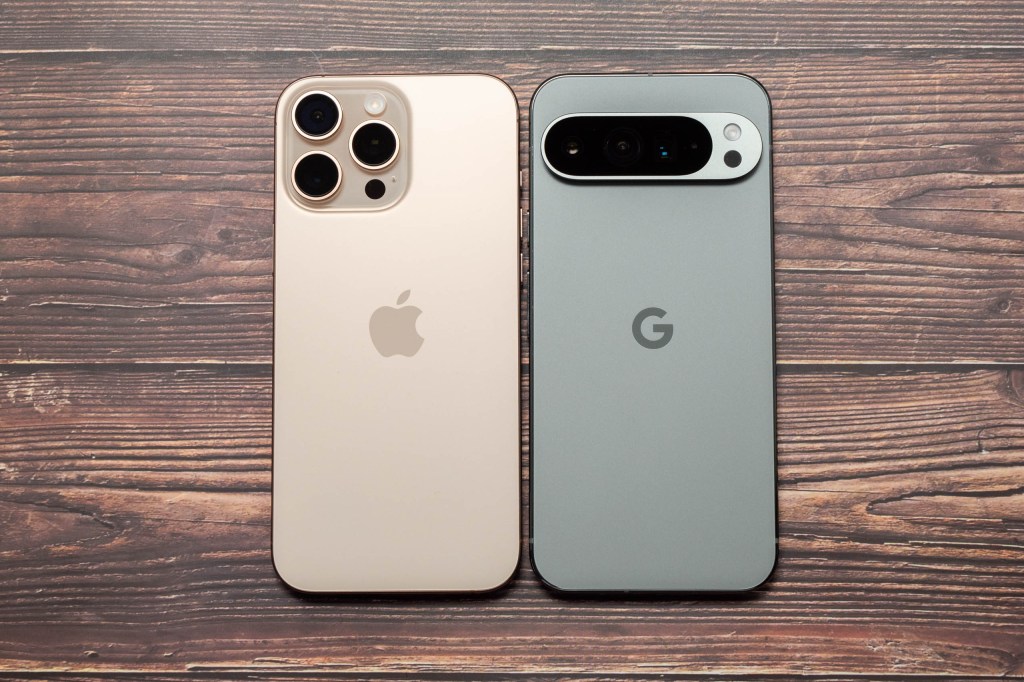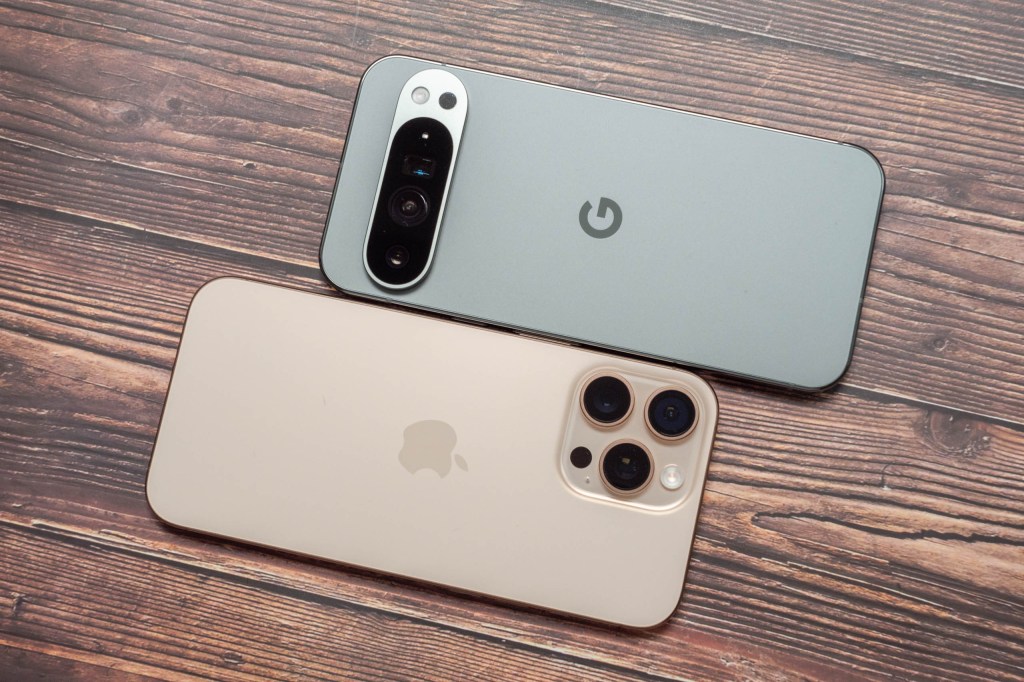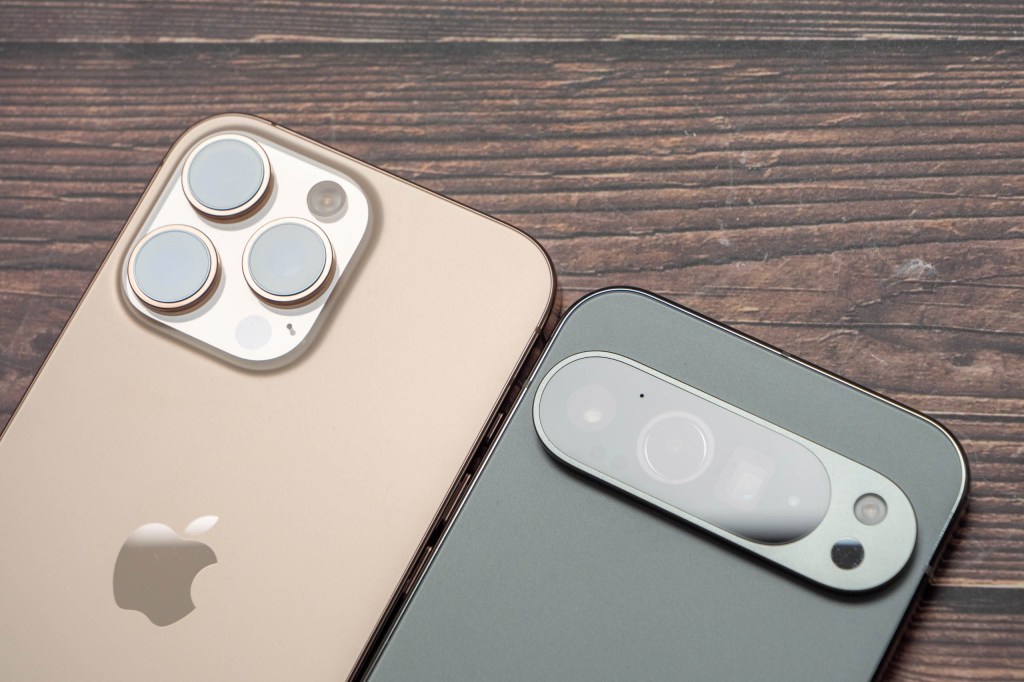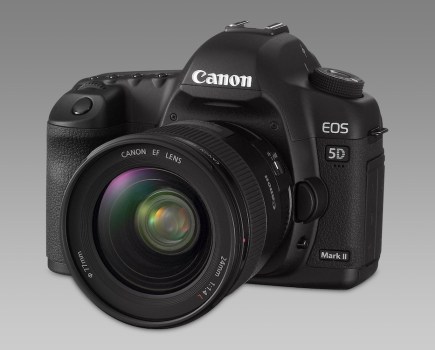Whether you’re tempted by the iPhone 16 Pro Max or the Google Pixel 9 Pro XL then you’ll be buying one of the best smartphones for photographers.
Both models produce great images, as well as offering a set of other useful specs for photographers. In this piece, I’ll be taking a look at how both perform across a range of different scenarios, including comparing hardware differences.

With either model you’ve actually got two screen choices, with a smaller or a larger screen to suit your needs paired with the same camera setup regardless of what size you choice. So you can also consider this to be a iPhone 16 Pro vs Google Pixel 9 Pro comparison too.
iPhone 16 Pro Max vs Google Pixel 9 Pro XL: Specs
Take a look at the table below. I’ve used it to compare the main specs from either phone, taking a look at what is likely to be particularly of interest to photographers. Where something is better, I’ve bolded it – there’s plenty of bold on both sides of the table here.
Both models have a triple lens set up, with each offering a 1x, an ultrawide and 5x telephoto, so they’re actually pretty similar. The main difference is that with the Google you get three high resolution sensors, while with the iPhone you only get two. The Pixel 9 Pro XL’s main sensor is slightly higher resolution than the iPhone, but, it outputs images at 24MP, compared to 12MP.
| iPhone 16 Pro Max | Google Pixel 9 Pro XL |
|---|---|
| 48MP f/1.78 main camera, OIS, 24MP output, 24mmm | 50MP f/1.68 main camera, OIS, 12MP output, 25mm |
| 48MP f/2.2 ultrawide camera, 12MP output, 13mm | 48MP f/2.8 ultrawide camera, 12MP output, 12mm |
| 12MPf/2.8 5x telephoto camera, 120mm | 48MP f/2.8 5x telephoto camera, 113mm |
| 12MP f/1.9 selfie camera, AF | 42MP f/2.2 selfie camera, AF |
| 4K 120fps video | 4K 60fps / 8K “upscaling” via the cloud |
| 6.9-inch XDR OLED Super Retina 2368 x 1320 pixels, 2000 nits brightness | 6.8-inch Super Actua OLED 2992 x 1344 pixels, 3000 nits brightness |
| Apple Intelligence (when available),A18 Pro processor | Google Tensor G4 |
| 33 hour battery life,wireless and Fast (20W) charging available | 24 hour+ battery life, wireless and Fast (45W) charging available |
| 256/512/1TB storage | 256GB, 512GB, 1TB storage |
| 163 x 77.6 x 8.25mm, 227g | 162.8 x 76.6 x 8.5mm, 221g |
What about things like screens? Well, the bigger phones are both fairly enormous. The iPhone has a bigger screen, but in terms of body size it’s very similar to the Pixel. If you don’t like massive screens, then it’s great that you can go for a smaller option without being penalised with a lesser camera. Some other points of difference is that the Google’s is significantly brighter and has a higher resolution.
In terms of usability, I find the larger phones to be a bit cumbersome – but others will like them. That’s a personal preference, and the bigger phones do make your photos and videos look great.

Apple has added a new “Camera Control” button for the iPhone 16 Pro/Max which you can use to launch the camera app, take photos, and even control things like zoom and so on. The Pixel doesn’t have anything directly comparable, but I don’t personally consider this a deal breaker. You can use the physical buttons to release the shutter though.
The native camera app for the iPhone is a lot simpler, and offers fewer modes, than the Pixels. Google offers a lot of extra functionality via AI, such as the fun “Add Me” feature which means you can take group photos without need for an additional person or a tripod, for example. There’s also things like “Action Pan” for creating panning shots, so if you think you’re likely to want to do such things, this might tip you towards the Google.
Image Quality
I shot a range of photographs with both the iPhone 16 Pro Max and the Google Pixel 9 Pro XL in different shooting situations to directly compare images. Here are the results.
Please note, the iPhone 16 Pro Max is on the left every time, and the Pixel 9 Pro XL on the right every time.


In general, both produce excellent results. Here, where both the images are shot with the standard / 1x camera, we can see that the Pixel is brighter and a little more saturated. While the iPhone is perhaps closer to reality, the processing from the Pixel has done enough to lift the scene without going overboard – such as I found when I compared the iPhone 16 Pro Max with the Samsung S24 Ultra. Note this is shot in the standard mode from both phones – with the iPhone you could easily shoot in a different “Photographic Style” to achieve something very similar. Both have plenty of detail, but with the 24MP standard output from the iPhone, you have a bit more option to crop afterwards if you need to.


Again with this shot taken with the ultrawide lens, we can see the disparity in colours, with the Pixel being more pleasing. There’s a little more detail in the iPhone shot though if you zoom in closely – but both look great on a phone screen. Although the iPhone 16 Pro Max’s ultrawide camera is 48MP, it can only be set to output 12MP images.


The last of the three lenses is the 5x zoom option. Although both are 5x, the EXIF data tells us that the iPhone 16 Pro Max has an equivalent focal length of 120mm, while the Pixel 9 Pro XL is slightly shorter at 110mm. Either way, detail is reasonably good from both of them, and again we have a slight difference in colour. Neither produce images which are as good as either device’s 1x lens, which is to be expected.


You can use digital zoom if you want to get even closer. With the iPhone 16 Pro Max it extends to 25x, while the Pixel 9 Pro XL goes as far as 30x. Neither are amazingly useful, but the Pixel 9 Pro XL’s is marginally cleaner. What you might find more useful is the 10x digital option – which is what’s shown above. This can give you somewhat useable results so long as you’re not expecting too much. Here, I’d say the Pixel is ever so slightly better – but there’s not much in it.


With either device, macro is achieved by using the ultrawide lens. You get a pretty good result with either option, but the Pixel is ever so slightly cleaner and brighter. We see better results from elsewhere in the market, but there’s not a world of difference here.


You can get great results from either of these models when shooting in low light. It’s pretty hard to pick apart these two shots here, both show a good degree of dynamic range and detail. Both are shot with the 1x lens. The colours from the iPhone are probably slightly more pleasing, being less yellowish in tone. Note that the images are taken a couple of minutes apart so the skies are a little different – but this is not anything to do with the phones.


Again here with the ultrawide lens, we’ve got similarly pleasing results. There’s perhaps a touch more detail in the Pixel shot (right) but they both look pretty good.


The 5x lens from either model performs the worst in low light, which is what we’d expect. Both are f/2.8 lenses, but the Pixel has a higher pixel count. However, in these examples here, there appears to be better detail in the iPhone shot, with quite a bit of smudging to be seen in the Pixel. It’s fair to say that both would look about the same when shared at normal web or printing sizes, though.


With the iPhone 16 Pro Max, you can either shoot in a dedicated Portrait mode, or the phone will automatically detect when you’ve pointed it at a portrait subject (human or pet), ready for you to convert it later on. With the Pixel 9 Pro XL you can also do something similar, as well as use a standard Portrait mode. With the Pixel’s Portrait mode you only have two shooting options – 1.5x or 2x, while the iPhone lets you shoot at 1x, 3x or 5x. In terms of the actual results, again, it’s a pretty close run thing. The level of blur from both of them is pretty good, with a decent amount of detail. Colours are similar with both, but perhaps the Pixel is ever so slightly more flattering.


The iPhone 16 Pro Max has a pretty disappointing selfie camera, that hasn’t been updated in a couple of generations. Meanwhile, the Pixel 9 Pro XL’s has been updated to a 42MP device. Note – it still outputs at 10.5MP. The Pixel’s selfie is darker and has richer colours, but the blur is perhaps a bit nicer with the iPhone. Again, there’s not a huge amount in it.
Price and Value for Money
It used to be the case that Pixel phones offered great value for money, but the most recent model has brought prices exactly in line with the iPhone – while the iPhone has remained the same price for a number of years.
This is a shame for those looking for a cheaper model, but perhaps Apple is able to keep its prices (relatively) low due to the sheer amount of units it sells, compared with Google, which has a tiny amount of the market.

For both models you’ve got the same cameras in two different sizes – the iPhone 16 Pro / Max and the Google Pixel 9 Pro / Pro XL.
There’s four different size options available for both the iPhone and the Pixel, but, you’ll only get the lowest 128GB for the iPhone 16 Pro, rather than for the Pro Max. Additionally if you want the max 1TB storage from a Google, you’ll have to be happy with the Black (Obsidian) model.
For the iPhone 16 Pro, prices are: $999/£999 (128GB), $1099/£1099 (256GB), $1299/£1299 (512GB) and $1499/£1499 for 1TB.
Meanwhile the Pixel 9 Pro, prices are: $999/£999 (128GB), $1099/£1099 (256GB), $1299/£1299 (512GB) and $1499/£1499 for 1TB.
If you prefer the larger phones, the iPhone 16 Pro Max prices are: $1199/£1199 (256GB), $1399/£1399 (512GB) or $1599/£1599 for 1TB.
Now, for the Pixel 9 Pro Xl the prices are: $1099/£1099 (128GB), $1199/£1199 (256GB), $1399/£1399 (512GB) or $1599/£1599 for 1TB.
Basically, these two phones are exactly the same price so in one way you could argue the value for money is the same with both. However, it’s important to remember how well different brands retain their value when you come to sell them or trade them in. In a year or two’s time, you’ll almost definitely get a lot more for an iPhone 16 Pro/Max than you would for a Pixel 9 Pro/XL, so in that regard, I’d have to say an iPhone is actually better value.
Verdict
Many of the current flagships are very similar in capability and price – such as is the case with the iPhone 16 Pro Max and the Pixel 9 Pro XL.
Which you prefer will more than likely come down to whether you’re an iOS or an Android person – if you’re iOS through and through, although the Pixel has many similarities to the iPhone, you may never be swayed.

If you’re an Android fan, you will of course be aware that there’s a lot more variety on the market. The Pixel is one of the finest options for photographers out there, though, so it’s often considered near the top of the list for those who prioritise camera specs over everything else.
In this case, both of the phones perform very well, with not a huge amount in between them. The default colours from the Pixel are slightly nicer, but you can easily achieve the same with the iPhone if you adjust Photographic Styles.
So what about price – well, it’s hard again with these two as both are priced exactly the same. It’s likely that the Pixel will drop in price at some point – Pixels usually do – but, then again, it’s also likely that an iPhone will retain its value much better than a Pixel, which is useful for resale.
There’s not even a gripe here about not having a choice of screen sizes, as both offer either a smaller or larger version depending on what you prefer.
All in all, I’ve reached a bit of an impasse with this one and I’m finding it hard to pick one or the other. Essentially it will come down to what you personally prefer – which one is that for you?
Read more smartphone comparisons:
- Best smartphones for photographers
- iPhone 16 Pro Max vs Samsung Galaxy S24 Ultra: battle of the biggest (and best?) phones
- iPhone 16 Pro Max vs iPhone 15 Pro Max
- iPhone 15 Pro Max vs Samsung Galaxy S23 Ultra







